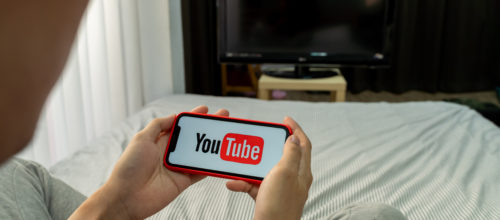
5 Years, 5 YouTube Lessons
It’s crazy to think that it’s been 5 years since my first YouTube video — My Story of Low Back Pain (L5-S1 Disc Bulge) & Top 5 Recommendations.
I started my YouTube channel to help people with low back pain that went through similar circumstances as I did — moving through a flawed medical system, working with incompetent clinicians and a lack of access to ‘quality’ low back pain resources.
After overcoming my back issues by doing self-rehab and studying a vast amount of low back pain research, including the works from Dr. Stuart McGill — I thought could help others with similar low back problems. I also looked at it as an opportunity, similar to how Eric Cressey became the shoulder/elbow guy in strength & conditioning after sustaining his shoulder/elbow problems.
I always thought that I would be working with hockey or basketball athletes. Never once did I think I would be focusing on low back pain.
But.
That’s not the case.
And.
A low back pain community was created.

How I Enjoy Watching YouTube Videos. A glass of whiskey and a cowboy hat 

While the journey continues for me, I thought it would be helpful to share 5 lessons I’ve learned from starting a YouTube channel. After 5 years of posting to YouTube, there is a lot of data I’ve collected and thought it would be helpful to share for anyone looking to start a YouTube channel or online business.
Before we jump into my 5 lessons, here are a few relevant statistics from the YouTube channel you should know.
As of May 8th, 2020:
- 7800+ subscribers
- 1.2+ Million Video Views
- 95000+ Hours of Watch Time
- 380+ Total Videos
By these statistics, by no means am I a big YouTuber. Some people would consider my Youtube channel small. Others perhaps a medium size channel. I would say that I’m the former approaching medium size. But that can be open to interpretation.
Regardless. My statistics are there, and there are a few lessons I’d like to share with you over my past 5 years of being a Youtuber.
1. One-Hit Wonder – While researching how to grow a YouTube channel, one thing I heard of was the one-hit wonder phenomenon. The one-hit wonder phenomenon is were one video takes off and kick-starts the growth of a YouTube channel.
Well, I can say, in my case, the first video that I created took off and lead to a significant portion of my growth. My Story of Low Back Pain (L5-S1 Disc Bulge) & Top 5 Recommendations has 400k views, and that results in 1/3rd of the total views on my channel. I never purposely tried to create a one-hit-wonder video, but I think the phenomenon holds to an extent. It takes one video to take-off to kick-start a channel’s growth and the direction the audience wants it to go.
Now.
I’m not saying you need to try and produce a one-hit-wonder type video, but I think you need to be strategic in creating content to succeed on YouTube. And that leads to my next lesson.
2. Niche – Once I started a YouTube channel, I know I wanted to make noise in the fitness industry. Yet, I didn’t think it was going to be in the low back pain community.
Before I started my YouTube channel, I studied the likes of Eric Cressey, Tony Gentilcore & Dean Somerset. All who had an online presence, but Eric had the most significant presence of the 3. He was the elbow/shoulder guy who became so good at what he did in the strength & conditioning field — he ended up with hundreds of MLB players as clients and is now the Director of Player Health & Performance for the New York Yankees.
I thought with my low back issues and seeing the market saturated with poor information on low back pain — I could be the low back pain guy. And, in turn, that worked out for me.
If you’re going to come in the online space and be successful – you’re going to need to have a goal and plan in place.
Niche down.
3. Long Videos Vs. Short Videos – Long videos tend to perform better than short videos. If I look at my most successful videos, the majority of them were 20+ minutes in length. According to YouTube expert Derral Eves, YouTube ranks videos with a longer watch time on average better than those with shorter videos. So when you’re trying to grow your YouTube channel, you must consider that longer videos tend to perform better than shorter videos. That’s not to say short videos are bad — there is a time and place for them, but longer videos tend to perform better.
4. Consistency – I’ve posted close to 400 videos in 5 years. If you think you can post 10-15 videos and your channel is going to blow-up, while having a successful business – I’m sorry to say to you that won’t happen. It takes consistency and patience to build. I’m not saying you need to post every day, but sticking to a consistent schedule of at ‘least’ posting once a week is going to be required to grow your YouTube channel and business.
5. Community – Since starting my YouTube channel, I’ve made an effort to go out of my way and answer nearly every comment or email I’ve ever received. By doing so, it allowed me to connect with thousands of people and create relationships to which I may have never developed if I didn’t engage with these people. From simply answering a person’s question, I can say it’s lead to the following: a new subscriber, a new client, and a new referral. The takeaway, be sure to engage with your community!
In Summary
The above 5 lessons should make you think about how you should approach starting a YouTube channel and a framework to build a small channel. I’m not an expert, nor is my YouTube channel huge, but I’ve developed it into a successful online community and business. And it’s only continuing to grow.
I hope these tips help!
Salute
Remi
Thumbnail Image Licensed from “canva.com/twinsterphoto.”
Blog Post Image Licensed from “canva.com/verbaska_studio.”











